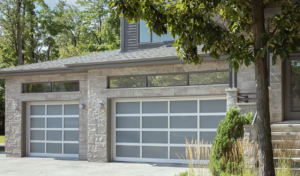Security companies offer an important service to businesses. They protect a business from crime and other threats, and they also act as first responders in case of an emergency.

Aside from defending a building, they can also provide customer services by directing customers to products and answering their questions. This way, they can make the customer experience more pleasant for everyone involved. Get in touch with Security Guard Companies In Baltimore Maryland for professional support.
Security guards are trained to respond to incidents quickly. They are also adept at communicating with people, which means they can help defuse tensions, and they have the skills to provide assistance and reassurance to customers. They can also act as liaisons with emergency services, which could help to minimise the damage caused by an incident.
Many security companies offer a variety of different security measures. This allows clients to select the level of security that is best suited to their needs. For instance, some businesses may require armed security guards, while others might benefit from plainclothes officers who can monitor entrances and exits discreetly.
A skilled security team will also be able to develop specific deterrence strategies that are tailored to their client’s unique location. This is particularly beneficial for businesses that operate in a high crime area or a public space, where criminals can often escape detection by being difficult to spot.
In addition to their security duties, a good security guard company will place a heavy emphasis on customer service. This is because it is important for businesses to create a positive brand image and to foster long-term client relationships. In this way, a business can build its reputation and increase profits, ensuring that it remains competitive in the security industry.
Having great customer service skills is essential for security guards, as they are frequently the first on-site people to be called upon when an emergency occurs. This is because it can take some time for police and emergency services to reach the scene of an incident, which means that on-site security guards can play a key role in the immediate aftermath of an event.
Preventing Accidents
A security guard company is the best way to protect your business from criminals, whether it’s to deter crime at a store or event, or to protect against break-ins and vandalism. Security guards can also be very helpful when it comes to incident reporting, and they’re often able to communicate with law enforcement when necessary. This can be a very valuable service, especially if you have high-value merchandise or are located in a highly populated area.
Security guards are also often responsible for providing basic customer service. This includes greeting customers, assisting them with directions, and helping them with any other needs that may arise. In retail locations, for example, they can help people find various departments or items that they are looking for, even late at night and during off-hours. This type of customer service can make a big difference in your business’s reputation, and it can be particularly helpful when you’re trying to boost sales.
If an incident occurs, security guards are trained to handle the situation calmly and efficiently. They can help to avoid accidents by ensuring that only authorized individuals enter restricted areas, and they can also monitor surveillance cameras to detect any suspicious activity. In addition, they can prevent unauthorized access to sensitive information or other security breaches by keeping an eye on visitors and maintaining visitor logs.
If you’re looking for a security guard company to hire, consider working with Prosegur or Allied Universal. These two companies offer opportunities on a national and international scale, as well as competitive pay and excellent benefits. They are also licensed to work in all 50 states, so you’ll be able to pursue security positions wherever your career interests take you.
Providing Basic Customer Service
Security guards often interact with people from a variety of backgrounds, so customer service skills are vital for their role. Whether they are greeting visitors to a facility, answering questions about the property or responding to an alarm, the ability to communicate clearly and efficiently is essential. Security guards also need to be able to diffuse any situations that may arise. This can include everything from an irate customer in a retail setting to a disgruntled employee at a workplace.
Many professional security guard companies offer additional services in addition to their traditional patrolling and deterrence services. For example, some security firms provide crisis management services to address issues such as political unrest, terrorist attacks, strikes and natural disasters. Others focus on providing specialized security for high-profile clients, including celebrities and athletes.
Another way that security guard companies can help clients is by managing crowds. During large events such as conferences, concerts and trade shows, security personnel can keep an eye on the crowds to make sure they don’t get out of hand. This helps ensure the safety of everyone involved, and it can also prevent any accidents from happening.
Finally, many security guard companies provide receptionist services for businesses. These security officers greet guests as they arrive, answer any questions they have and escort them in the right direction. They can also monitor security cameras in and outside of operating hours, let customers in and out of the building using a security gate and respond to any alarms that are activated on the premises.
If you are interested in a career as a security guard, you can start by finding a company that offers quality training and benefits. Security guards are a vital part of any business, and it’s important to find a company that values the skills and experience you have to offer.
Managing Crowds
Whether they’re at work or off duty, security guards are always in contact with people. It’s important for them to find a balance between their personal life and professional duties so they can stay focused on their responsibilities without becoming overwhelmed or overtired. This includes finding time to socialize and relax with family and friends so they can maintain a healthy work/life balance.
In addition to ensuring their own safety, security guards must also provide basic customer service to visitors to their business or event. Whether it’s answering questions about your security services or the layout of your facility, a security guard’s customer service skills can leave guests with a positive experience and a strong impression of your company.
Public events often draw large crowds of people with a variety of needs and behaviors. Hiring a private security guard company to manage crowds can help ensure that all attendees have an enjoyable experience and that no one is harmed or injured. These professionals are skilled in directing the flow of crowds, preventing overcrowding, and managing queues to minimize risk and maximize efficiency.
Unfortunately, there are sometimes unruly attendees who cause disruptions or behave inappropriately at events. Security guards are trained to intervene quickly in these situations and defuse tense moments. They can quickly assess the situation, provide first aid if necessary, and coordinate with emergency services to evacuate attendees if needed.
Security guards must also have patience in order to resolve problems and address customers’ concerns. It’s not uncommon for them to encounter individuals who are upset or frustrated, but their customer service skills can make all the difference in keeping things calm and resolving conflicts.
Responding to Emergency Situations
Security guards are familiar with emergency response protocols and know how to quickly assess the situation and take appropriate action. This includes notifying authorities and/or building management or emergency services as needed, using fire safety equipment like fire extinguishers, and guiding occupants to safe areas during a disaster. They are also trained to manage crowds and maintain order, helping prevent panic and ensure a smooth evacuation process during emergencies.
In medical emergencies, security guards are often the first to respond and can provide lifesaving care before paramedics arrive. They are often trained in basic first aid, allowing them to provide CPR, control bleeding, and stabilize fractures until professional help arrives. They are also skilled in handling situations involving psychological stress and anxiety, providing reassurance and comfort to individuals affected by these events.
During natural disasters, security guards can also play an essential role in maintaining stability and preventing property damage. They are often familiar with assessing and mitigating risks, including floods, earthquakes, and tornadoes, as well as the proper usage of fire suppression systems. They are also able to coordinate with emergency personnel and act as liaisons between them and occupants, ensuring they have the necessary information to keep everyone safe during a crisis.
Security guards are often a visible presence on your premises, serving as a visual deterrent to criminal activity. Their uniforms, badges, and authority can discourage criminals from committing crimes, especially during times of high-crime activity. Additionally, they can also provide an immediate physical barrier to criminals by reacting quickly and swiftly to incidents. They can also act as a valuable resource in creating post-emergency reports, documenting the incident with clarity and accuracy.








